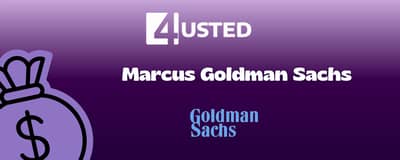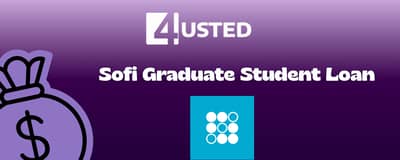In today’s rapidly changing business environment, securing the right capital can make or break a fledgling venture. Aspiring entrepreneurs need to navigate a complex financing landscape to find resources that align with their goals and risk tolerance. From traditional banks to online platforms, options abound. However, understanding when to use a personal loan versus pursuing a Small Business Administration (SBA) loan is critical to ensuring long-term success and financial stability.
With small business financing demand on the rise, entrepreneurs must be equipped with practical insights. Approval rates at large banks have declined sharply, while alternative lenders continue to gain momentum. Remaining informed about this dynamic and evolving market empowers founders to choose the most efficient path to growth.
Personal Loans vs. Business Loans
Personal loans provide a faster, more accessible route to startup capital, requiring minimal paperwork and no business history. Yet, they often carry higher interest rates and smaller borrowing limits. Business loans, especially SBA-backed products, offer larger sums and competitive rates but demand extensive documentation and time.
- Quicker access with minimal documentation: Personal loans can be approved in days, ideal for urgent cash needs.
- Lower rates and larger amounts: SBA loans average over $400,000, with competitive interest rates.
- Stringent eligibility requirements: SBA applications require detailed business plans and strong credit scores.
Understanding SBA Loans
SBA loans are government-backed products designed to reduce lender risk and offer affordable financing to small businesses. The most popular programs include the 7(a) and 504 loans, which can fund working capital, equipment purchases, or real estate acquisitions. In 2023, the approval rate for SBA loans reached 59%, combining full and partial approvals.
Eligibility criteria for SBA loans include:
- For-profit status and physical presence in the U.S.
- Credit score of 640 or higher (varies by lender and loan type).
- At least two years of business operations in most cases.
- Demonstrated equity investment and a sound business purpose for the funds.
- No recent delinquencies on government debts or criminal issues for owners.
Applicants must also provide proof of ownership, financial statements, tax returns, and any required environmental reviews. A personal guarantee and guaranty fees apply to most 7(a) loans, reflecting the shared risk between borrower and lender.
Alternative Lending Options
As traditional banks tighten approval standards, non-bank and online lenders have sprung up to fill the gap. Embedded lending and fintech platforms are projected to grow at a 20.4% CAGR, reaching over $23 billion by 2031. These lenders often deliver funds in days with streamlined digital applications.
Key benefits include reduced paperwork, flexible credit criteria, and innovative financing structures such as revenue-based repayment. However, businesses should weigh the convenience against higher interest rates and origination fees that can erode profitability over time.
Approval Rates and Loan Sizes
Understanding what to expect during the application process helps entrepreneurs plan effectively. While large banks approved only 13.5% of small business loans in early 2025, online lenders averaged nearly 30% approval rates. SBA lenders approved 59% of applications in 2023, demonstrating a strong commitment to small business growth.
Loan sizes vary widely by product: an SBA loan can exceed $400,000, whereas the typical personal loan hovers around $11,600. Alternative lenders may cap funding at $100,000 but offer faster decisions and fewer requirements.
Costs and Interest Rates
Annual costs associated with small business debt climbed to an average of $12,000 in interest payments in 2023, a 12% increase year-over-year. Interest rates fluctuate with Federal Reserve policy, landing between 4.5% and 9.8% for most business loans.
Personal loans can carry rates from 6% up to 36%, depending on creditworthiness and lender risk appetite. It is essential to perform a cost-benefit analysis, comparing the total repayment amount and fees across loan types before proceeding.
Overcoming Common Challenges
Many entrepreneurs struggle with lengthy approval timelines, strict eligibility criteria, and complex paperwork. These barriers often delay critical investments in equipment, marketing, or staffing. Additionally, a large share of applicants receive only partial funding, averaging 50% of the requested amount.
Confidence gaps and limited financial literacy can exacerbate these issues, making it hard to pinpoint the optimal loan product. Business owners should seek educational resources and consider consulting with financial advisors to increase their likelihood of success.
Strategic Tips for Entrepreneurs
- Assess your precise capital needs: define startup costs, cash flow requirements, and growth milestones.
- Maintain and improve both personal and business credit scores well above the minimum thresholds.
- Prepare comprehensive documentation: financial statements, tax returns, business plans, and ownership records.
- Apply to multiple lenders and platforms to compare offers and negotiate better terms.
- Factor in all costs, including origination fees, prepayment penalties, and guaranty fees.
By combining careful planning with broad market awareness, entrepreneurs can secure the right financing vehicle to propel their ventures forward.
In conclusion, personal loans offer unmatched speed and accessibility, while SBA loans provide substantial funding with favorable rates for those willing to navigate detailed requirements. Alternative lenders offer a hybrid solution, bridging time and eligibility gaps. Ultimately, understanding the nuances of each option and crafting a tailored financing strategy will empower small business owners to achieve sustainable growth and success.














